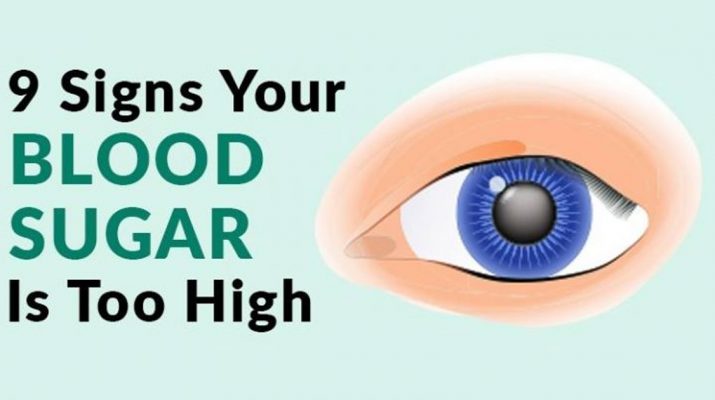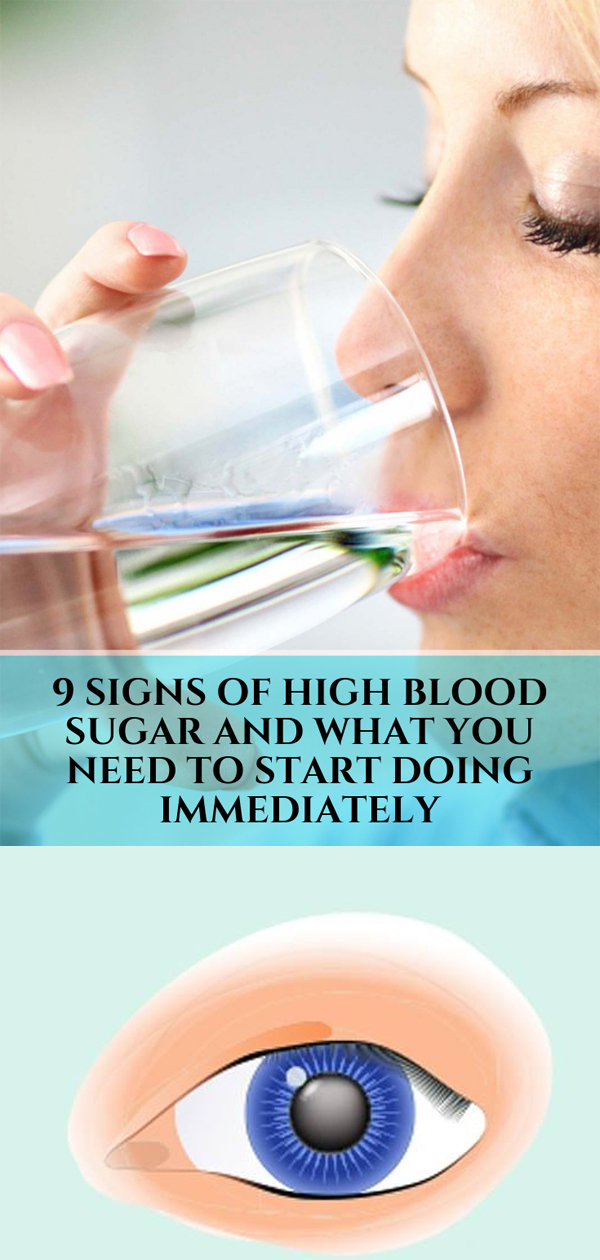Diabetes is a real epidemic in the United States, and the statistics reveal alarming numbers. This disease affects over 29 million Americans, and one in three people is at an increased risk of developing diabetes symptoms at some point in life. Another 86 million people have prediabetes, and 30 percent of them develop type 2 diabetes within five years.
Moreover, a third of individuals who suffer from diabetes are unaware of it. Therefore, it is of utmost importance to learn the symptoms of this disease and find a way to naturally control it and even reverse it.
This metabolic disorder is caused by the difficulties to control the hormone insulin, and the high levels of glucose in the blood lead to diabetes symptoms.
Diabetes is developed when the body stops releasing or responding to normal amounts of insulin as a result of the consumption of foods with carbohydrates, sugar, and fats. Insulin is a vital hormone as it allows macronutrients to be properly broken down and transported to cells and be used as energy sources.
We need insulin to carry glucose through the bloodstream to cells in order to supply the muscles with energy and thus support their growth, improve brain activity, and so on. Insulin decreases the sugar levels in the bloodstream, so as they drop, normally so does the insulin secretion from the pancreas.
The symptoms of this disorder develop sooner in type 1 diabetes, and at a younger age than with type 2 diabetes. In the case of type 2 diabetes, the signs and symptoms are milder, and the issue can be left untreated longer, especially with gestational diabetes, that develops during pregnancy and usually lasts for a short period of time.
Dr. Mercola clarifies the difference between all these terms:
“Pre-diabetes, also known as impaired glucose tolerance, is a term used to describe an earlier state of progressing insulin resistance. It is conventionally diagnosed by having a fasting blood sugar between 100 and 125 mg/dl. Pre-diabetes is very easy to turn around.
Simply swapping processed foods for whole organic foods lower in sugar and sugar-forming carbohydrates combined with a few minutes of daily exercise will quickly put you on the road to reversing this condition.
Metabolic syndrome. As your insulin resistance progresses, your liver makes too much sugar and fat, and your skeletal muscles are less able to burn them and make glycogen, which is how glucose is stored in your muscles and liver. In turn, there is an increase in sugar and fats in your bloodstream which leads to high triglyceride levels and increased body fat–especially abdominal fat, and higher blood pressure.
Having 3 or more of a group of symptoms caused by insulin (and now we also know leptin) resistance — high triglycerides, low HDL, higher blood glucose and blood pressure, and increased belly fat—is referred to as metabolic syndrome (in the past it was called Syndrome X).
Type 1: insulin-dependent diabetes. Traditionally, type 1 diabetes develops before the age of 20. It used to be relatively uncommon, but as noted above, its incidence is rapidly rising.
Type 1 diabetes is classically an autoimmune disease in which your immune system destroys the insulin-producing cells of your pancreas, resulting in an inability to produce any significant insulin which that if left untreated, will cause death in days to weeks from a hyperglycemic coma. This deficiency of insulin is why type 1 is called “insulin-dependent” diabetes.
Type 2: non-insulin-dependent diabetes. In type 2 diabetes, the pancreas is producing some insulin, in fact usually too much, but is unable to recognize the insulin and use it properly.
This is an advanced stage of insulin resistance, which is typically caused by a diet that is too high in sugars and sugar-forming foods. When you have inadequate insulin signaling, sugar cannot get into your cells and instead builds up in your blood. Type 2 diabetes represents the vast majority of all diabetics, and contrary to conventional medical and media teaching, it’s nearly 100 percent curable7 through lifestyle changes alone.”
These factors increase the risk for type 2 diabetes:
- A sedentary lifestyle
- A family history of diabetes
- being over the age of 45
- being overweight or obese
- hormonal imbalances, including polycystic ovary syndrome
- a family background that is African-American, Alaska Native, American Indian, Asian-American, Hispanic/Latino or Pacific Islander American
- history of heart disease, high blood pressure (140/90 or above), high-density lipoprotein (HDL) cholesterol below 35 milligrams per deciliter (mg/dL) or a triglyceride level above 250 mg/dL
If ignored or undiagnosed, diabetes can cause damage to the nerve fibers that affect the heart, blood vessels, organs, limbs, and eyes, and increase the risk of coronary heart disease, trouble getting pregnant or a risky pregnancy, vision loss, digestive issues, and more.
These are the most common signs and symptoms of type 1 diabetes:
- Blurred vision
- Constant thirst and a dry mouth
- Appetite changes
- Fatigue and mood swings
- Heavy breathing
- Nerve damage that causes pain and numbness in the feet, hands, and limbs
- slow healing of skin wounds, bruises, and cuts, frequent infections
- unexplained weight changes, especially losing weight
- a loss of consciousness
In the case of type 3 diabetes, one can develop the same symptoms, but later. Besides them, these are the most common symptoms of type 2 diabetes:
- weight gain
- chronically dry and itchy skin
- patches of dark, velvety skin in the folds and creases of the body
- sexual dysfunction
- frequent infections (urinary, vaginal, yeast and of the groin)
- pain, swelling, numbness or tingling of the hands and feet
Diabetes can cause numerous other complications as well, which lead to more harmful symptoms, so early detection is vital. It will lower the risk of nerve damage, cardiovascular problems, skin infections, further weight gain/inflammation and more.
The following factors determine whether one will develop worsened symptoms or complications: the family history, blood pressure levels, the lifestyle, the length of time one suffers from diabetes, and how well the blood sugar levels are controlled.
Symptoms Related to Nerve Damage (Neuropathy):
Half of all diabetics develop some form of nerve damage, especially if the disorder has not to be treated from its early stages. These are the signs of nerve damage due to diabetes:
- muscle pain and weakness
- tingling in the feet, described as “pins and needles”
- changes in the senses, including smell, taste, sight, and hearing
- Digestive issues
- burning, stabbing or shooting pains in the feet and hands
- Troubles sleeping
- sensitive skin that feels very hot or cold
- proneness to injuries or falling
- accelerated heartbeat
- perspiration changes
- erectile dysfunction, vaginal dryness, and loss of orgasms
- carpal tunnel syndrome
Eye-Related Diabetes Symptoms:
Diabetes leads to severe eye issues, and even vision loss. It affects the outer, tough membrane part of the eyes; the macula, the front part, which is clear and curved, and the cornea/retina, which focus light. These are some of the symptoms it causes:
- glaucoma
- cataracts
- vision loss, seeing spots, and even blindness
- Diabetic retinopathy
- nerve damage
- macular degeneration
Skin-Related Diabetes Symptoms:
Diabetes affects the skin leading to poor circulation, slow wound healing, lowered immune function, and itching or dryness. These are the symptoms it causes:
- Acne
- rashes/infections
- blisters and scales
- bacterial infections
- sties in the eyes and eyelids
- fungal infections
- necrobiosis lipoidica diabeticorum
- folliculitis (infections of hair follicles)
- jock itch, athlete’s foot, and ringworm
- dermopathy
Natural Ways to Control Diabetes Symptoms
Fortunately, diabetes can be controlled and corrected with treatment and lifestyle changes.
Numerous people suffering from type 2 diabetes have managed to reverse it by lowering stress, improving diet, sleep, and physical activity. Here are some useful tips that can help you control diabetes and even win the battle with this serious medical condition:
1. Regular Checkups
As many people do not develop noticeable symptoms, regular checkups can help you control the blood sugar levels, weight, blood pressure, the progression of the disease, eyes, skin, blood pressure levels, weight and heart.
2. Control Blood Sugar to Stop Nerve Damage
If you experience digestive issues, take probiotics, digestive enzymes, and supplements like magnesium that control the symptoms, relax muscles, and improve gut health. In the case of hormonal imbalances, sexual dysfunctions and trouble sleeping, lower stress, improve your diet and be more physically active.
3. Eat a Balanced Diet and Exercise
Obesity and physical inactivity are linked to the development of type 2 diabetes, so it is important to follow a healthy diet, rich in unprocessed, whole foods. Moreover, you should avoid added sugars, trans fats, processed grains and starches, and conventional dairy products.
4. Protect the Eyes
To prevent eye-related problems like glaucoma and cataracts, make sure you check the eyes at least twice annually. Also, wear sunglasses when in the sun, and if your eyes have been severely damaged, you should get a lens transplant to preserve vision.
5. Improve Skin health
In order to prevent skin issues and infections, practice good hygiene, control blood sugar levels, and naturally protect it using natural cures such as essential oils.


